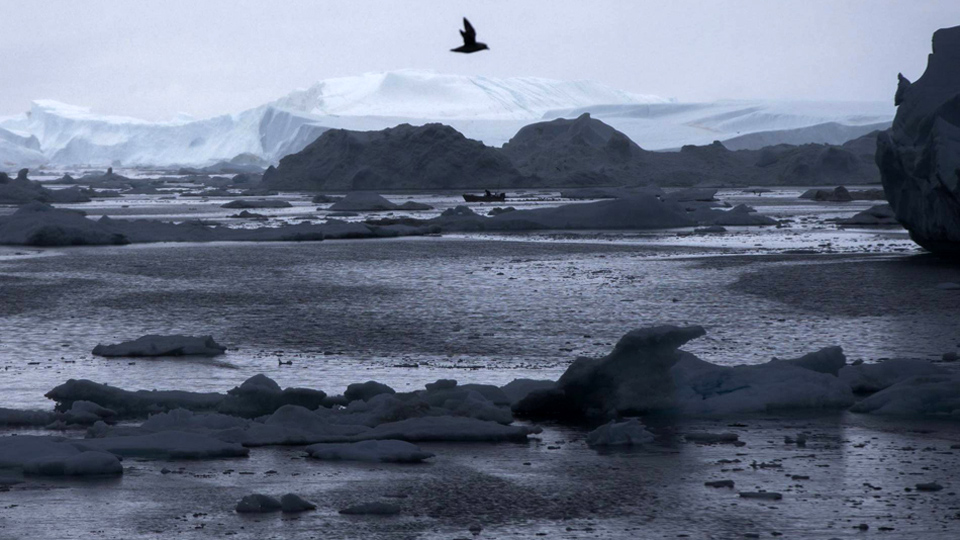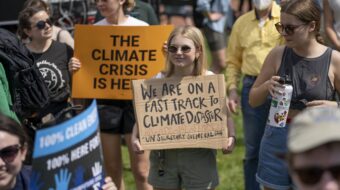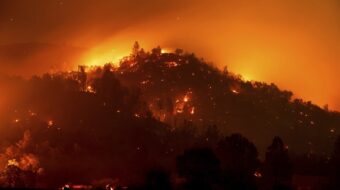
Greenland and other parts of the world are experiencing a troubling phenomenon. It sounds like something out of post-apocalyptic fiction, but the dark snow falling on land ranging from the Arctic to the Himalayas is quite real. The black material found in the snow is comprised of dust and soot. It’s called cryoconite, and it’s largely the product of forest fires and man-made global warming. In terms of both climate and pollution, it’s a sign that things are getting worse.
American geologist Ulyana Horodyskyj, from the University of Colorado, Boulder, first encountered the blackened snow while setting up a weather station on the Nepal-Tibet border. “One week old snow was turning black and brown before my eyes,” she said. She and her fellow researchers “found contaminants after melting down samples and running them through a filter.” The dark snow is also disconcerting for another reason. “You know how you feel warmer in the sun if you wear a dark shirt rather than a light-colored shirt? That’s because the dark material absorbs more radiation. Dark particles on the white snow do the same thing, melting the snow faster.”
An Earth & Space research study is in agreement with this conclusion, noting that “albedo” – a scientific term meaning “reflective whiteness” – represents the fraction of solar energy that Earth reflects back into space. Lightly colored areas of the planet, especially those covered in fresh snow and ice, reflect the largest portion of that energy, while darker areas absorb more heat.
According to data from the Geological Survey of Denmark and Greenland, in 2014 the Arctic ice sheet was 5.6 percent darker than the 1981-2010 average. During that same year, there were more forest fires measured in the Arctic than ever before in history, and the Greenland ice sheet has melted at a rate of about 286 gigatonnes per year since 2009. This shows a startling correlation between the black snow and natural disasters caused by climate change. This creates a vicious cycle in which more fires are caused as ice warms, and the ice warms more quickly due to the cryoconite that is, in part, a product of those fires.
Forest fires, however, are not the main culprit. Other contributors include power plants and wood-burning stoves, according to National Geographic. The overall darkening of the snow, and the ensuing melting effect, will likely cause sea levels to rise more rapidly than previously forecast, as prior studies had not taken this recent phenomenon into account.
Part of the solution, say researchers, is to reduce emissions caused by the burning of fossil fuels and wood, which means shifting toward clean energy and addressing the issue of increasing brushfires. “Controlling soot may be the only method of significantly slowing Arctic warming within the next two decades,” said Marc Z. Jacobson, director of Stanford University’s Atmosphere/Energy Program. “We have to start taking its effects into account in planning our mitigation efforts and the sooner we start making changes, the better.” Cryoconite, he learned, is the second-leading cause of global warming after carbon dioxide. He also pointed out that this is not just about vanishing sea ice and future climate change catastrophes, but also about the here and now. These kinds of soot emissions, he found, kill over 1.5 million people prematurely each year, and leaves millions more with respiratory issues, cardiovascular disease, and asthma.
“Black carbon or soot,” said Horodyskyj, “is hard to spot with the naked eye,” when it is in areas that are inaccessible to most people – high up in the Himalayas, for example, where it has been found. “Yet we see the damage it leaves in its wake.” That damage, she explained, varied depending on region. These “dark particles lead to enhanced heating, melting, and sublimation. While melting ice in Greenland can directly contribute to sea level increases, in the Himalayas ice loss affects people on a more local scale, by disrupting water sources, as well as cutting off climbing routes. The Nepalese Himalaya are home to eight of the world’s 8,000-meter peaks. As climate continues to change and conditions become more treacherous for climbing, this may affect the local communities who rely on trekkers and mountaineers for income.”
Whether in the Himalayas or Greenland, “this is mostly [caused by] manmade pollution,” she concluded. “Governments must act, and people must become more aware of what is happening. It needs to be looked at properly.”












Comments